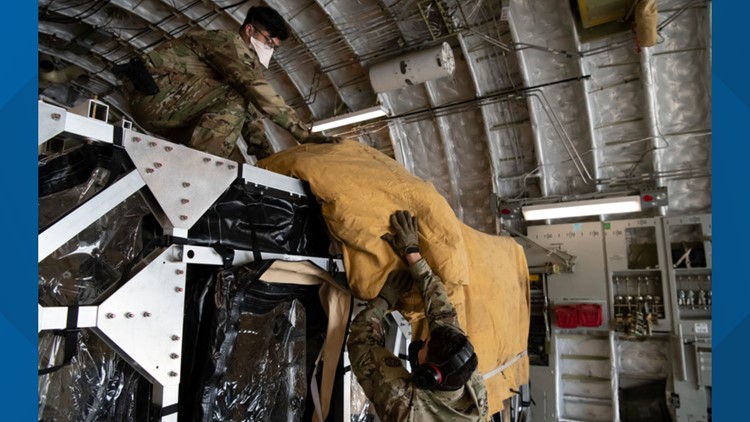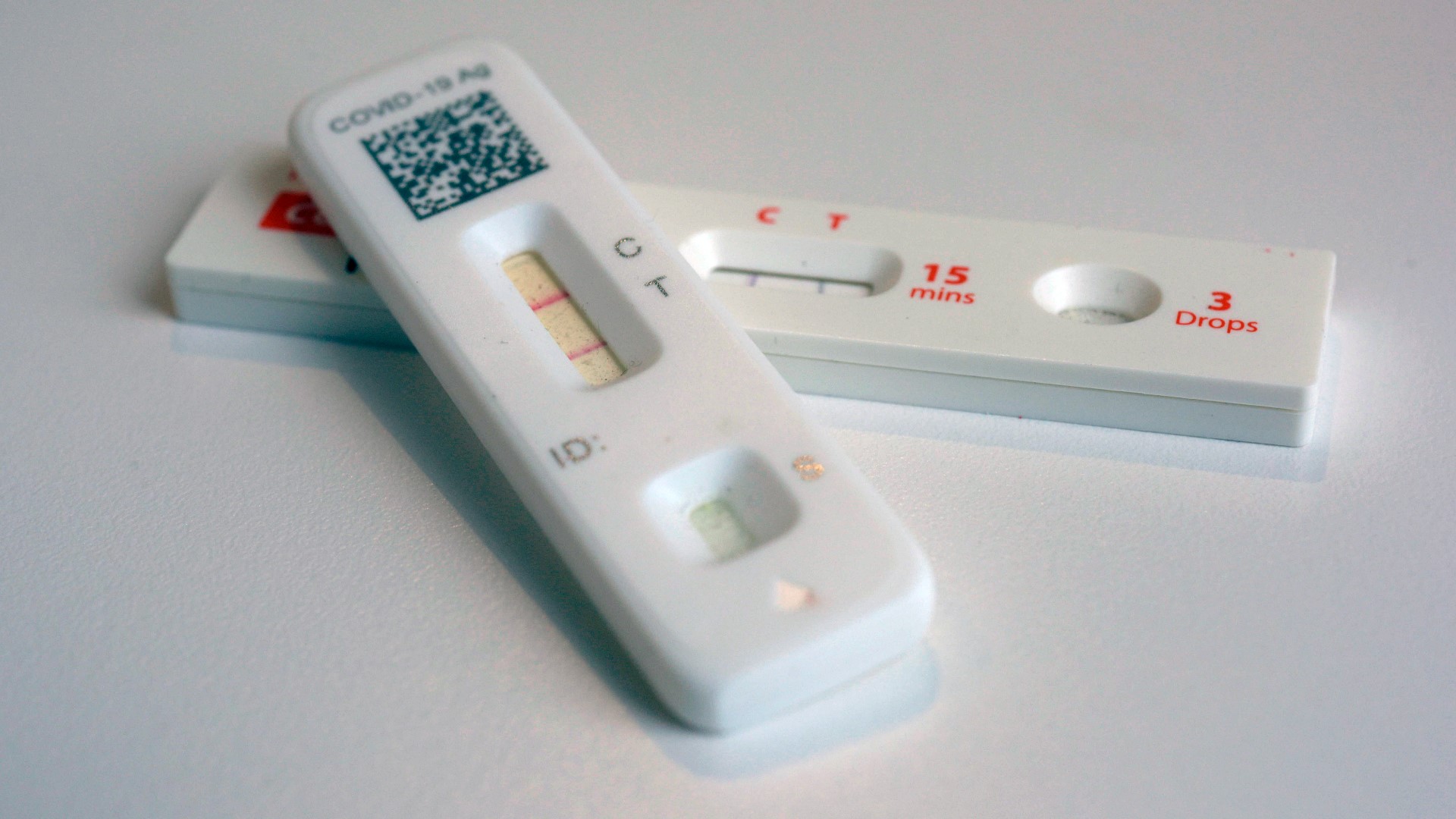DOVER, Del. — Dover Air Force Base in Delaware is serving as the East Coast hub for an infectious disease containment unit designed to allow in-flight medical care for patients being transported by plane.
The Transport Isolation System, or TIS, is designed to minimize risk to aircrew members, medical attendants, and the airframe, according to the United States Department of Defense.
Dover AFB was selected due to its strategic location, assets, and capabilities, the DOD said.
Airmen will support and decontaminate TIS units used in conducting COVID-19-positive patient transport missions from Africa, Europe and the Middle East to the United States.
In the ongoing fight against COVID-19, two TIS units, along with trained medical airmen, arrived at Dover Air Force Base on April 30. The team is composed of service members from six different units from across the United States, according to the DOD.
"The airmen and infrastructure of Dover Air Force Base are vital to the TIS mission," said Air Force Col. Matthew Jones, the commander of the 436th Airlift Wing, said in a post on the DOD website. "This is a total force effort between active duty, reservists and civilians. This team stands united against this shared threat, and we remain ready to deliver when called upon."
The TIS emerged as a result of mobility requirements identified during Operation United Assistance in support of the Ebola outbreak in 2014, the DOD said.
"We have two TIS modules here, because that is a standard configuration [in an aircraft]," said Air Force Maj. Mark Dellinger, the 36th Aeromedical Evacuation Squadron training flight commander. "Each has the capability of carrying four patients.”
Medical personnel assigned to the TIS mission receive training, including familiarization with the system, patient loading and unloading procedures, donning and doffing personal protective equipment, simulated in-flight patient care and infection control procedures.
"The health and safety of our warfighters is paramount," said Air Force Capt. Travis Parrott, a 3rd Airlift Squadron C-17 pilot and stage representative for Dover Air Force Base TIS decontamination operations. "The TIS enables the Department of Defense to transport patients afflicted with or suspected of an infectious disease like COVID-19 from overseas to the United States, providing for an expedient recovery of its personnel, as well as preventing the spread of COVID-19 to aircrews."
Health protection policies have been established at Dover in accordance with guidance from the Centers for Disease Control and Prevention and the Defense Department, in addition to local and state public health assessments.
As part of the whole-of-government response to COVID-19, the TIS mission at Dover will continue for as long as required.
"With this mission, Dover Air Force Base is ensuring not only the safety of our mobility airmen, but also the readiness of our military as a whole," said Air Force Maj. Gen. Sam Barrett, the 18th Air Force commander. "I am grateful for all the hardworking Dover airmen who are helping keep our entire force healthy during the battle against COVID-19."



